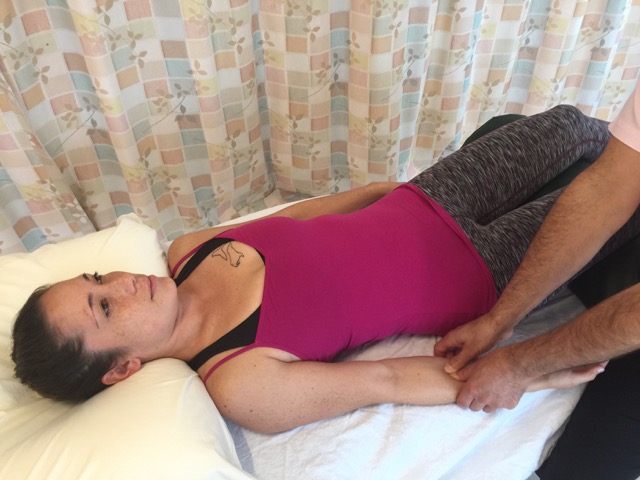Medical approach to Wrist Sprain, Wrist Strain, and Tendinitis
A wrist sprain, strain, and tendinitis usually resolves well with manual therapy, so referral to a physician is rarely needed.
When consulted, the medical approach to wrist sprain, strain, or tendinitis, is usually to recommend rest, over the counter non-steroidal anti-inflammatory medication, steroidal anti-inflammatory prescription medication, and/or use of a brace. If pain is present, pain medication may also be prescribed.
Manual Therapy Case Study Wrist Sprain, Wrist Strain, and Tendinitis
Joe is an 18-year-old high school graduate who is working a summer job before going away to college. His job involves lifting and stacking boxes in a warehouse. Joe presents to you with pain and a feeling of weakness in his right wrist, as well as soreness in the front of his forearm. The pain began a few days ago and has steadily worsened each day. On a pain scale of 0-10, the wrist pain is a 6 and the forearm discomfort is a 3. Lifting boxes at work increases the pain.
The therapist performed active and passive ROM and manual resistance to the right wrist. Joe experienced anterior wrist and forearm pain with active flexion and radial deviation, as well as manual resistance to these motions. He experienced the same symptoms to a lesser degree with active and passive extension. Upon palpatory examination, his entire wrist flexor group is tight, especially the flexor carpi radialis, with trigger points proximally in the common flexor belly/tendon region near the elbow. His flexors digitorum superficialis and profundus are also tight. Inflammation is present in the anterior wrist.
Given the location of Joe’s symptoms and the fact that pain increased with use of the anterior flexor musculature of the wrist (active ROM and manual resistance to flexion), and the fact that passive flexion ROM was negative, Joe was assessed as having wrist flexor muscle tendinitis and strain; the flexor carpi radialis was most affected. This was backed up by the increased tone and the presence of myofascial trigger points in his wrist flexor musculature.
Given the assessment of wrist flexor tendinitis and strain, the therapist recommended one-hour massages, twice weekly for two weeks. Each session consisted of approximately 20 minutes of deep tissue work to the right forearm and distal arm, with emphasis on the anterior forearm and the bellies of the wrist flexor group in particular. Ice was applied for 3-5 minutes and gentle transverse friction was done to the anterior wrist tendons to decrease possible adhesion formation. Deep transverse friction was then applied to the common flexor tendon at the medial epicondyle. The remainder of the time was spent working the rest of Joe’s right arm and shoulder region, except for the last five to ten minutes which were spent working Joe’s left upper extremity to proactively prevent possible problems given the fact that Joe is now favoring his right side by using his left more.
Joe was given self-care instructions to rest and ice his right hand as much possible; Joe decided to take a week off work to give his wrist a chance to heal. A wrist brace was also recommended. Gentle stretching into extension was recommended during the second week after the swelling had decreased.
At the end of two weeks, Joe’s symptoms had decreased over 50%. Care was continued at twice per week for another week and then decreased to once per week for another two weeks until Joe became pain free. For proactive self-care, Joe began a regular strengthening and stretching program with emphasis on his upper extremities. He returns for massage approximately once every month or so.



